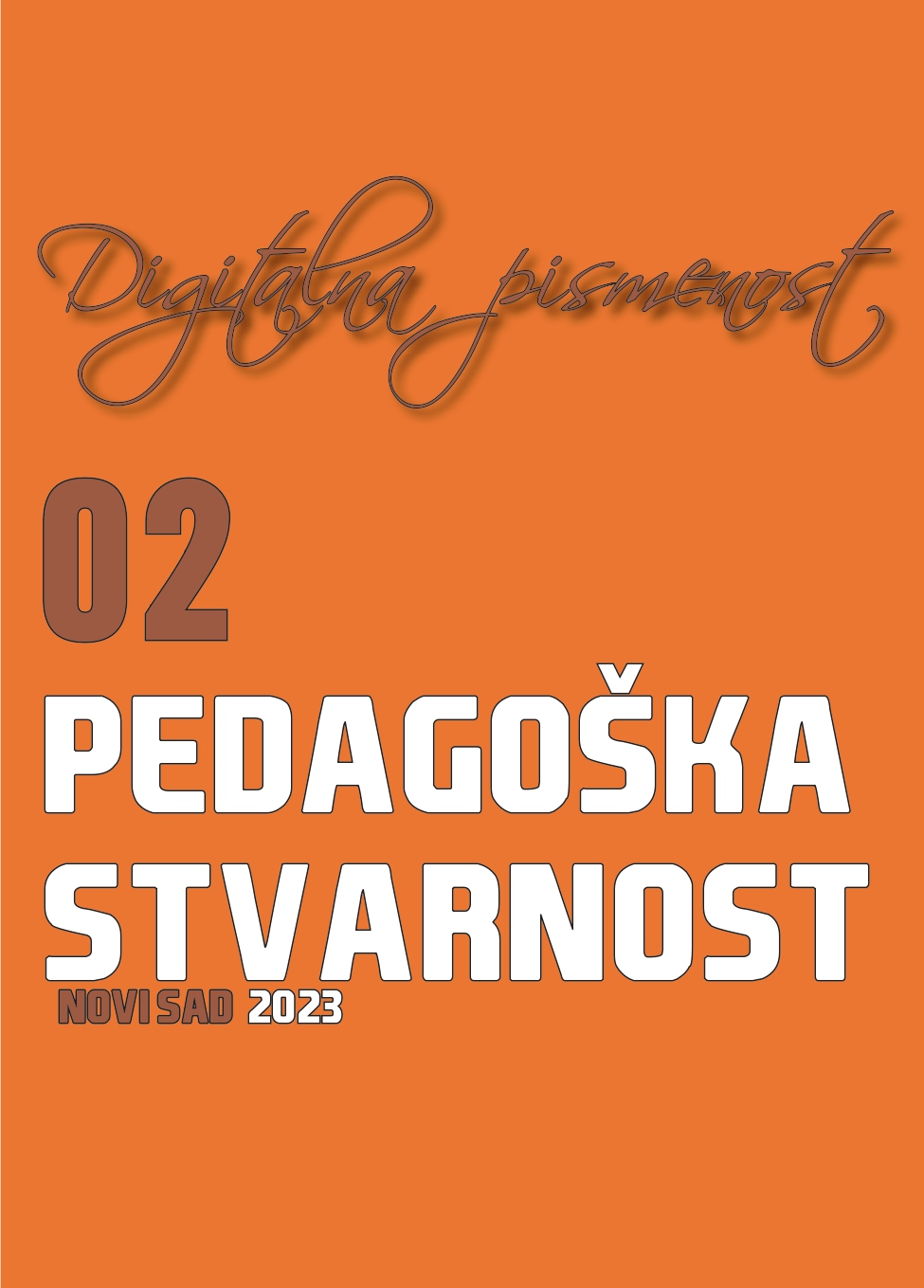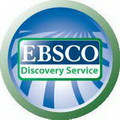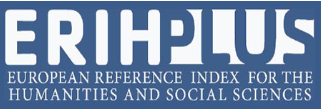Razvoj digitalne pismenosti unutar koncepta samoizražavanja učenika
Originalni naučni rad
Apstrakt
Tradicionalna pedagoška paradigma često zanemaruje identitete učenika, što dovodi do nepovezanosti školskog i vanškolskog konteksta. Savremeno shvatanje pismenosti naglašava snagu jezičkih iskustava učenika u nastavi pismenosti i važnost samoizražavanja, validacije identiteta, jezika, kulture, znanja i interesovanja u nastavi. Kako se u pedagogiji sve više prepoznaje značaj digitalnih tehnologija i njihova sveprisutnost u različitim facetama života, tako isto im pažnju posvećuju studije pismenosti, razmatrajući njihovu ulogu u razvoju pismenosti. Stoga, trebalo bi promišljati o nastavi samoizražavanja učenika u sferi digitalne pismenosti. U ovom radu ispitujemo spajanje ova dva koncepta, u cilju razvijanja identiteta učenika i sposobnosti za digitalnu pismenost kao osnovu za život, učenje i rad u savremenom društvu. Istražujemo 4D model razvoja digitalne pismenosti i načine konceptualizacije nastave i implikacije ovakve ideje. Polazimo od kreiranja nastave i aktivnosti koje se odnose na korišćenje digitalnih tehnologija, uzimajući pritom u obzir identitete učenika. Dalje, analiziramo raznovrsnost načina izražavanja koje nam digitalni kontekst omogućava i implikacije po razvoj učenika. Sagledavajući digitalne tehnologije kao način učestvovanja u različitim praksama i zajednicama diskutujemo o njihovom uticaju na identitet učenika. Razmatramo pristup nastavi koja bi razvijala kritičku pismenost u digitalnoj sferi. Naposletku, posvećujemo pažnju razvijanju digitalnog identiteta učenika.
Reference
Barnes, M. & Tour, E. (2023). Empowering English as an additional language students through digital multimodal composing. Literacy, 57(2), 106-119.
Behizadeh, N. (2014). Adolescent perspectives on authentic writing instruction. Journal of Language and Literacy Education, 10(1), 27-44.
Boyd, D. (2014). It’s complicated: the social lives of networked teens. New Haven and London: Yale University Press.
Burnette, C. B., Kwitowski, M. A., Mazzeo, S. E. (2017). “I don’t need people to tell me I’m pretty on social media:” A qualitative study of social media and body image in early adolescent girls. Body image, 23, 114-125.
Bruning, R., & Horn, C. (2000). Developing motivation to write. Educational Psychologist, 35(1), 25-37.
Cummins, J. & Early, M. (2011). Introduction. In Cummins, J. & Early, M. (Eds.) Identity texts: the collaborative creation of power in multilingual schools (pp. 3-20). Stoke on Trent: Trentham books.
Cummins, J., Hu, S., Markus, P. & Montero, K. M. (2015). Identity texts and academic achievement: connecting the dots in multilingual school contexts. Tesol Quarterly, 49(3), 555-581.
Darvin, R. (2017). Language, ideology, and critical design literacy. in Thorne, S. & May, S. (Eds.) Literacies and Language Education: Encyclopedia of Language and Education, (pp. 17-30). Springer Cham.
Dawson, C. (2009). Beyond checklists and rubrics: Engaging students in authentic conversations about their writing. English Journal, 98(5), 66-71.
Dewey, J. (1913). Interest and effort in education. Boston: Houghton Mifflin Company.
Duke, N. K., Purcell-Gates, V., Hall, L. A., & Tower, C. (2007). Authentic literacy activities for developing comprehension and writing. The Reading Teacher, 60(4), 344-355.
Esteban-Guitart, M. & Moll, L. (2014). Funds of identity: a new concept based on the funds of knowledge approach. Culture and Psychology, 20(1), 31-48.
Fabos, B. (2004). Wrong turn on the information superhighway: education and the commercialization of the internet. New York: Teachers College Press.
Freire, P. (2005). Pedagogy of the oppressed. New York: The Continuum International Publishing Group Ltd.
Gallagher, K. & Yaman Ntelioglu B. (2011). Which new literacies? Dialogue and performance in youth writing. Journal of Adolescent and Adult Literacy, 54(5), 322-330.
Gao, X., Pan, W., Li, C., Weng, L., Yao, M. & Chen, A. (2017). Long-time exposure to violent video games does not show desensitization on empathy for pain: an fMRI study. Frontiers in Psychology, 8, 1-10.
Gee, J. P. (2004). What video games have to teach us about learning and literacy. New York: Palgrave Macmillan.
González, N. (2005). Beyond culture: the hybridity of funds of knowledge. In N. González, L. Moll & C. Amanti (Eds.), Funds of knowledge: theorizing practices in households, communities, and classrooms (pp. 29-46). New Jersey: Lawrence Erlbaum Associates.
Gošović, R., Mrše, S., Jerotijević, M., Petrović D. i Tomić, V. (2012). Vodič za unapređivanje interkulturalnog obrazovanja. Beograd: Fondacija za otvoreno društvo.
Gouseti, A., Bruni, I., Ilomäki, L., Lakkala, M., Mundy, D., Raffaghelli, J., Ranieri, M., Roffi, A., Romero, M. & Romeu, T. (2021). Critical digital literacies framework for educators - DETECT project Report 1. Accessed at: http://doi.org/10.5281/zenodo.5070329
Green, B. (1988). Subject-specific literacy and school learning: A focus on writing. Australian Journal of Education, 32(2), 156-179.
Hobbs, W. & Roberts, M. (2018). How sudden censorship can increase access to information. American Political Science Review, 112(3), 621-636.
Kalantzis, M. & Cope, B. (2012). Literacies. Cambridge: Cambridge University Press.
Kristal, D. (1996). Kembrička enciklopedija jezika. Beograd: Nolit.
Lambert, J. (2011). Multi-language identity texts + internet technology: a case study in Guza, China. In J. Cummins & M. Early (Eds.) Identity texts: the collaborative creation of power in multilingual schools (pp. 97-101). Stoke on Trent: Trentham books.
Maine, F. (2017). The bothersome crow people and the silent princess: exploring the orientations of children as they play a digital narrative game. Literacy, 51(3), 138-146.
Marsh, J. & Millard, E. (2000). Literacy and popular culture - Using children’s culture in the classroom. London: Paul Chapman Publishing.
Martin, A. & Grudziecki, J. (2006). DigEuLit: Concepts and tools for digital literacy development. Innovation in Teaching and Learning in Information and Computer Sciences, 5(4), 1-19.
Masats, D. & Unamuno, V. (2011). Getting students to document linguistic diversity. In J. Cummins & M. Early (Eds.) Identity texts: the collaborative creation of power in multilingual schools (pp. 107-110). Stoke on Trent: Trentham books.
McFarlane, A., Sparrowhawk, A. & Heald, Y. (2002). Report on the educational use of games. Cambridge: Shelford Studio.
McLean, S. A., Paxton, S. J. & Wertheim, E. H. (2016). The role of media literacy in body dissatisfaction and disordered eating: A systematic review. Body Image, 19, 9-23.
Nagle, J. & Stooke, R. (2016). Railways, rebellions and Rage Against The Machine: adolescents’ interests and meaning-making in the creation of multimodal identity texts. Literacy, 50(3), 158-165.
Nichols, T. P. and Johnston, K. (2020) Rethinking availability in multimodal composing: frictions in digital design. Journal of Adolescent and Adult Literacy, 64(3), 259–270.
Nixon, H. & Comber, B. (2005). Behind the scenes: making movies in early years classrooms. In J. Marsh (Ed.), Popular culture, new media and digital literacy in early childhood (pp. 166-179). London and New York: RoutledgeFalmer.
Ogbu, J. G. (1982). Cultural discontinuities and schooling. Anthropology and Education Quarterly, 13(4), 290-307.
Pahl, K. & Rowsell, J. (2005). Literacy and education. London: Paul Chapman Publishing.
Plut, D. (2003). Udžbenik kao kulturno-potporni sistem. Beograd: Zavod za udžbenike i nastavna sredstva i Institut za psihologiju Filozofskog fakulteta Univerziteta u Beogradu.
Poter, Dž. (2011). Medijska pismenost. Beograd: Clio.
Rowsell, J. & Pahl, K. (2007). Sedimented identities in texts: instances of practice. Reading Research Quarterly, 42(3), 388-404.
Senić Ružić, M. (2021). Ka kritičkom digitalnom obrazovanju: kako razvijati digitalnu pismenost? U V. Spasenović (Ur.), Obrazovanje u vreme kovid krize. Gde smo i kuda dalje: zbornik radova (str. 169-182). Beograd: Filozofski fakultet Univerziteta u Beogradu.
Sharpe, R. & Beetham, H. (2010). Understanding students’ uses of technology for learning: Towards creative appropriation. In R. Sharpe, H. Beetham & S. de Freitas (Eds.), Rethinking learning for the digital age: How learners shape their experiences (pp. 85–99). New York and London: Routledge.
Skutnabb-Kangas, T. (1991). Bilingvalizam - da ili ne. Beograd: Zavod za udžbenike i nastavna sredstva.
Stančić, M., Mitrović, M. & Radulović, L. (2013). From glorifying method toward post-method stance: Searching for quality of teaching/learning. In M. Despotović & E. Hebib (Eds.) Contemporary issues of education quality (pp. 41-55). Belgrade: University of Belgrade, Faculty of Philosophy, Institute for Pedagogy and Andragogy.
Stille, S. (2013). Making an edible school garden with multilingual children: Engaging linguistic, cultural, and community resources. In S. V. Chappell & C. J. Faltis (Eds.), The arts and emergent bilingual youth: Building critical, creative programs in school and community contexts (pp. 52–59). New York: Taylor and Francis.
Stojić, T. (2016). Uvod. U D. Petrović i T. Jokić (Ur.) Interkulturalno obrazovanje u Srbiji - regulativni okvir, stanje i mogućnosti za razvoj (str. 13-16). Beograd: Centar za obrazovne politike.
Szycik, G. R., Mohammadi, B., Münte, T. F., & te Wildt, B. T. (2017). Lack of evidence that neutral empathic responses are blunted in excessive users of violent video games: an fMRI study. Frontiers in Psychology, 8, 1-8.
Tadić, A. (2019). Na distanci od manipulacije: emancipatorska komponenta vaspitnog rada nastavnika. Beograd: Institut za pedagogiju i andragogiju Filozofskog fakulteta.
Teodorović, J., Milin, V., Bodroža, B., Đerić, I., Vujačić, M., Jakšić, I. i Stanković, D. (2017). Izveštaj o istraživanju i priručnik za realizovanje kvalitetne nastave „Unapređivanje obrazovne efektivnosti osnovnih škola“. Jagodina: Fakultet pedagoških nauka Univerziteta u Kragujevcu.
The New London Group (1996). A pedagogy of multiliteracies: designing social futures. Harvard Educational Review, 66(1), 60-93.
Waller, M. (2017). The role of schools in children’s online safety. In J. Brown (Ed.), Online risk to children: impact, protection and prevention (pp. 217-230). New Jersey: Wiley.
Walsh, C. (2007). Creativity as capital in the literacy classroom: youth as multimodal designers. Literacy, 41(2), 79-85.
Willett, R. (2005). Baddies in the classroom: media education and narrative writing. Literacy, 39(3), 142-148.
Wiltse, L. (2015). Not just ‘sunny days’: Aboriginal students connect out-of-school literacy resources with school literacy practices. Literacy, 49(2), 60-68.








